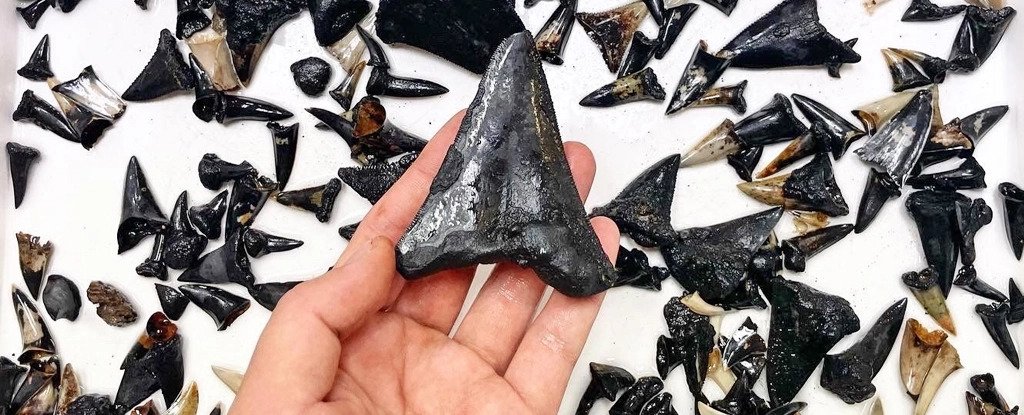After discovering a number of strange creatures in the depths near the Cocos (Keeling) Islands, Australia’s national science agency, CSIRO, has found something quite surprising at the bottom of the watery divide: a shark graveyard filled with fossilized teeth that are several million years old.
It had an interesting mix of modern and ancient shark parts
At first, the researchers thought they had pulled out a net full of sediment and manganese nuggets. Then take a closer look.
It was great, it really was; Not all of them were fossils, some of them were a new species of shortfin mako shark and two large species of white shark Diane Bray said, Museums Victoria Research Institute Collections officer at the Australian Broadcasting Corporation (ABC), which he owns ScienceAlert Scientific portal on the Internet.
Specialists discovered more than 750 mineralized teeth from a depth of 5.4 kilometers, representing several predatory species.
This shark evolved into Megalodon, the largest of all sharks, but it became extinct about 3.5 million years ago. said Glen Moore, Curator of Fishes at the Western Australian Museum, who said the find contained an interesting mix of modern and ancient shark parts, including some from the direct ancestor of Megalodon.
He added that megalodon sharks were so huge that they were able to swallow the largest shark of the day, the great white shark (Carcharodon carcharias).
Since sharks have cartilaginous skeletons rather than bones, most of their remains decompose before becoming fossilized, with the exception of teeth and occasional scale. So these remains are the only traces of the 450 million years of history of these ancient animals on Earth.
A new type of shark has also been discovered
It is not clear why so many remains spanning such a long historical period were collected in one place.
I don’t know of any clear explanation as to why they were together, other than that it was one of the lowest points on the ocean floor, so they ended up going down Moore noted that the “graveyard of predators” was found during the investigation of two new marine parks located 2,500 km off the west coast of Australia.

Since then, the CSIRO research vessel that found the tomb, the Investigator, has embarked on another voyage, this time to Gascoyne Marine Park off Western Australia, where the ship has also discovered a new species of shark.
At the beginning of the trip we collected a small striped Cape horn shark – said Will White, CSIRO ichthyologist. – This species is unique to Australia, but has not yet been described or named; The specimen we collect will be incredibly important to science because we will use it to describe the species.
Cape horn sharks, already known to science, hide among rocks and seaweed on the shallow sea floor during the day and feed at night. However, the new species has been found in waters deeper than 150 meters, where there are no hiding places like seaweed.












































